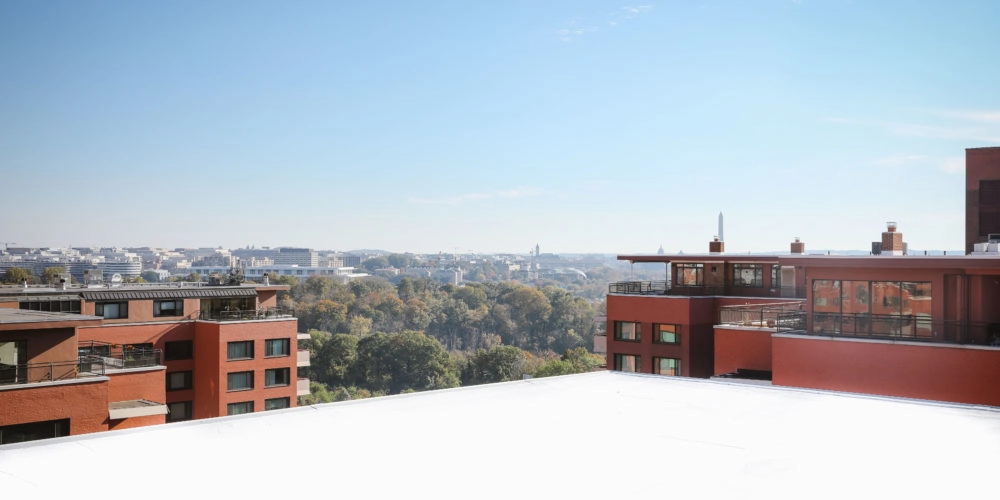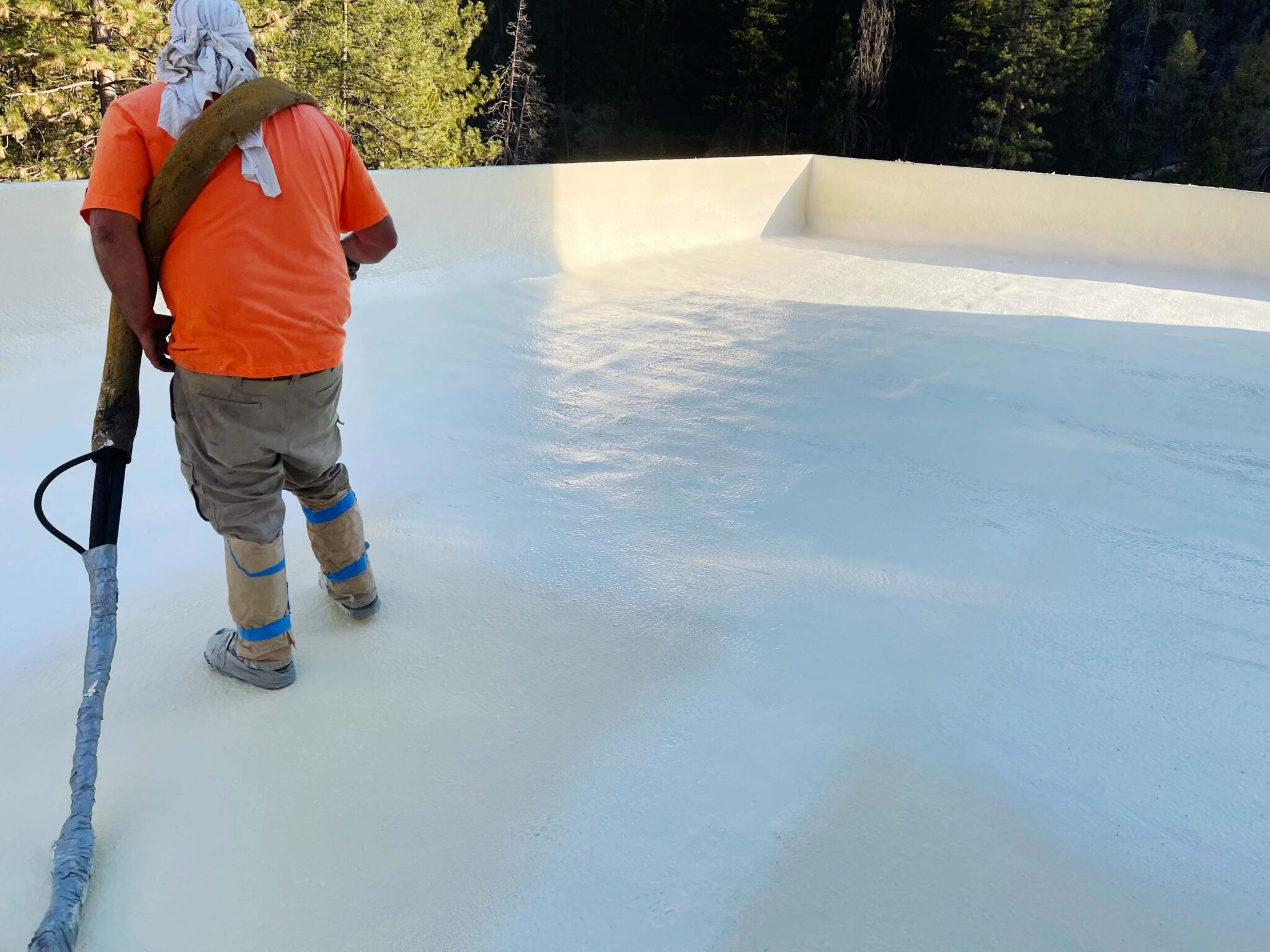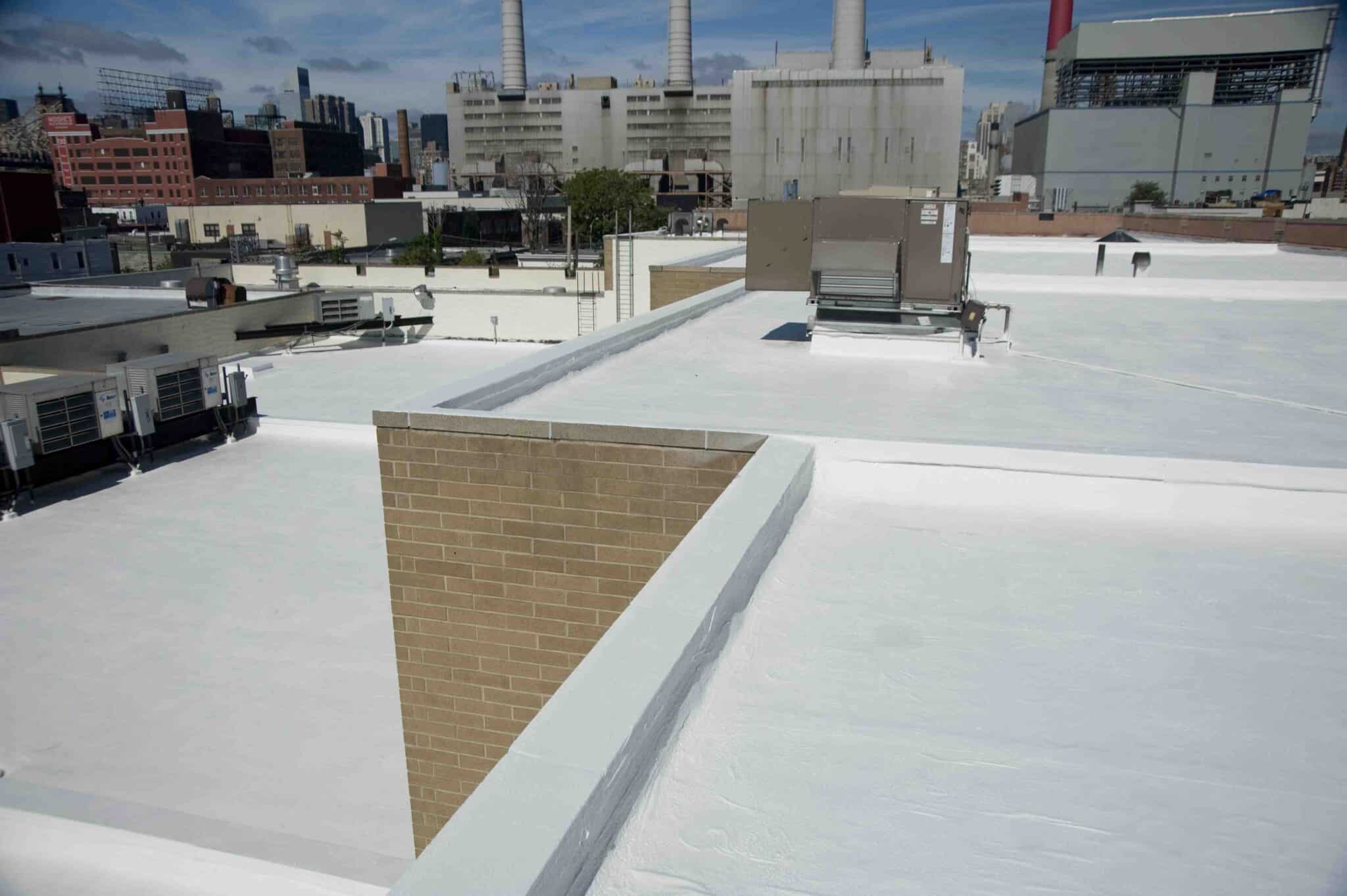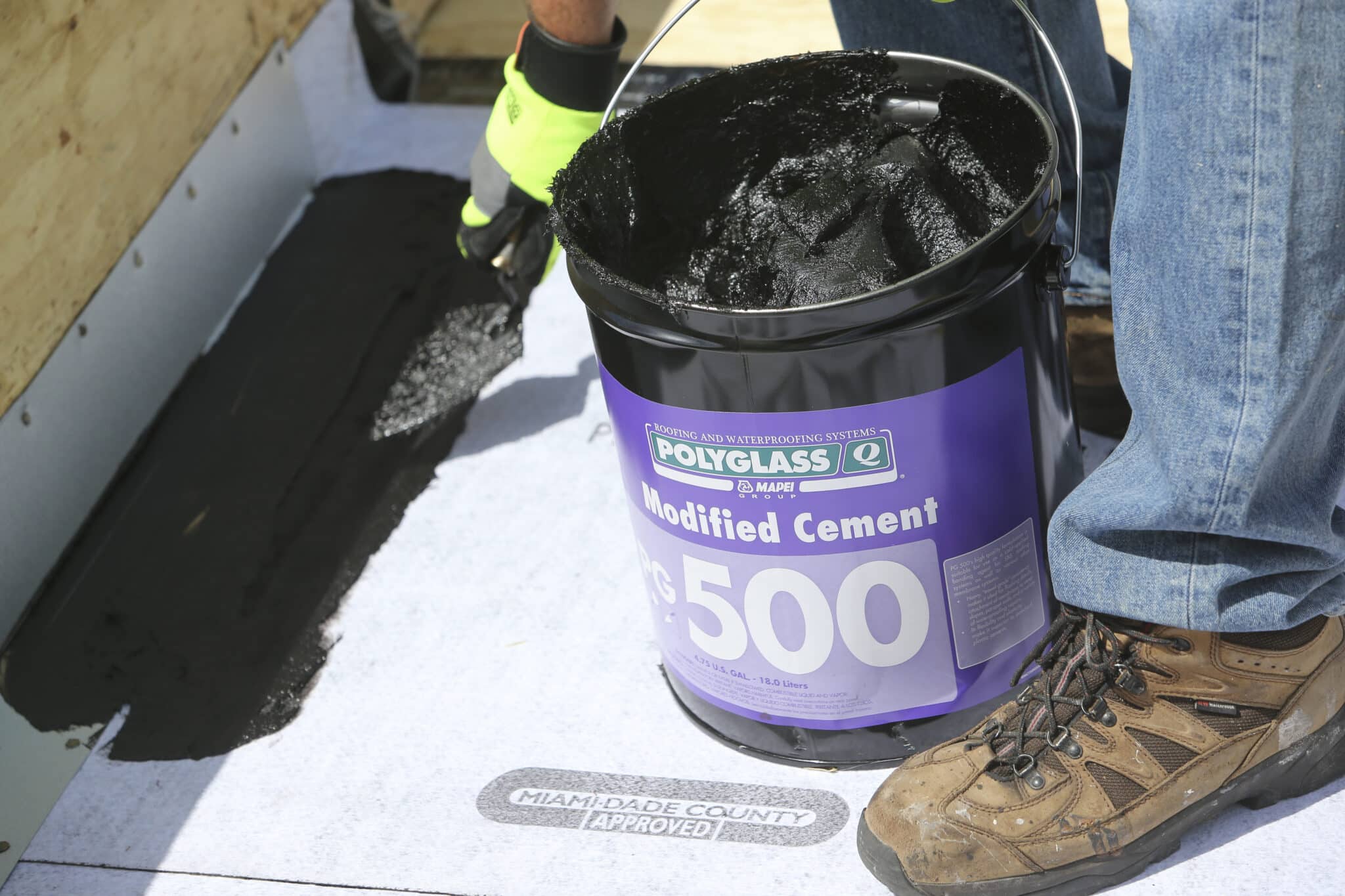This article by Steven Wadding, Corporate Project Manager for Polyglass U.S.A, Inc., originally appeared in the July 2022 Issue of the Florida Roofing Magazine and has been modified for the web.
The buildings and spaces we live, work and play in all form part of the built environment. As the name implies, the built environment comprises man-made or modified structures and surroundings, including parks and green spaces, bridges, roads, transportation systems, and any supporting infrastructure for distributing water or electricity.
As our needs as humans have evolved, the buildings and structures around us have become more complex, leading to the need for new or improved building materials. Better processes and advances in technology and chemistry have also resulted in expanded and enhanced products for the built environment.
This article discusses the sealants and liquid-applied coatings and systems available and their applications for waterproofing and sealing the building envelope.
Coating and Sealing Products for the Built Environment
Sealants are a critical component in the control of water, moisture, and air management for the modern built environment. At the same time, coatings or liquid-applied materials are necessary for waterproofing below-grade areas and the roof. When specifically discussing liquid-applied coatings and sealants, we generally think of the following applications and product types:
- Waterproofing below-grade – liquid-applied (urethane, asphaltic emulsion)
- Waterproofing plazas/between slab (non-exposed) – liquid-applied (urethane, asphaltic rubber)
- Waterproofing (exposed) –liquid-applied (urethane, PMMA, polyurea/polyurea urethane hybrids)
- Low-slope roofing – liquid-applied reinforced systems and protective-only coatings (aluminum/acrylic/silicone, urethane)
- Low-slope flashings –liquid-applied flashing systems (silane-modified, PMMA)
- Low-slope remediation –liquid-applied (acrylic, silane-modified, PMMA)
- Steep-slope flashing/detailing – (acrylic, silane-modified, PMMA)
- Metal roof restorations –liquid-applied reinforced systems (acrylic, silicone)
- Metal roof restorations – liquid-applied protective-only coatings (acrylic, silicone, aluminum)
- Air and water-resistive barriers – liquid-applied (acrylic, STPE, silicone)
Sealants can be used as a secondary barrier to a primary system or as the primary barrier. Examples include sealing metal counterflashing with the roof flashings, which is the primary barrier, or when glazing, fenestration openings, and expansion joints are used as the primary.
A wide variety of sealant chemistry has emerged to be more application specific. While there are still many general-applications sealants available, such as urethane or silicone chemistries, that work reasonably well, several products within these and other chemistries have been specially designed for better performance in more specific applications. In this case, improved performance can be as simple as a better bond to a surface material type.
In previous decades,liquid-applied materials for the built environment were limited and conventional for underground areas and roofs. There were roof coatings such as acrylics and fibered and non-fibered emulsions, and aluminum for the exterior. Acrylic-latex paints were primarily used for the exterior walls and urethanes for the occasional horizontal deck, such as parking garages. Sealants were mainly used at wall joints, flashing and counterflashing, window interfacing, and sometimes, where expansion control was needed.
In a more modern built environment, many things determine the products and designs used – for example, building codes.
Building Codes Challenges
As far as building codes are concerned, change is the only real constant. With codes continuously under review, adoption, and implementation, contractors (and designers) are faced with the evolutionary task of staying aware of changes implemented by the authority having jurisdiction (AHJ). These changes sometimes occur without much notice or public awareness (Pro tip: FRSA members can stay ahead of the curve through the FRSA’s involvement in the code development process).
In addition, building departments and inspectors can have varying interpretations of the same code language. This is even more complicated in Florida, where variations of the code exist, as is the case for the High Velocity Hurricane Zone (HVHZ) versus the Non-High Velocity Hurricane Zone (non-HVHZ), each with unique requirements that rarely overlap. Regional jurisdictions wanting to implement their own standards for their county or city further add to the confusion.
Product Applications for the Built Environment
While building structures are traditionally perceived to include a foundation, vertical walls, and a roof – collectively known as the building envelope – building designs, their uses, and interaction with their surroundings have continued to evolve and become increasingly complex. Non-conventional building spaces, for example, now include balconies used as meeting spaces, vegetative areas, or places to retain and recycle water. With this evolution of the building has come the need to rethink how traditional products are used and how new products are implemented.
Below-Grade Materials and Systems
When considering the base of a traditional building, we think of foundations and under-slab conditions. In the urban environment, where underground parking is popular, sealants, sheets, and liquid-applied membranes are the most common products for these and similar designs.
The below-grade elements of the building are, in most cases, sheet-type membranes and liquid-applied materials, while sealants are most often an accessory to the waterproofing system. Once the building needs are understood, foundation walls can be effectively protected with the proper liquid-applied materials and systems.
Liquid-applied materials and systems typically considered for these applications include.
- Urethanes (hydrostatic and non-hydrostatic conditions)
- Asphaltic emulsions (dampproofing only)
Horizontal Building Locations
Though the roof areas using liquid-applied products and sealants are primarily horizontal in design, many horizontal areas of the building that require air, water, and moisture control are not actual roof areas. Balconies, plaza decks, recreation decks, and other similar designs are increasingly common in modern structures, renovations, or those with occupancy changes. Liquid-applied products and sealants can be an optimal solution for such applications.
Types of products range depending on many project specifics, be it the location, substrate, or performance needs. Not all liquid-applied materials and sealants are created equal, and the more you research, you may find many products are best suited for specific conditions and not as a one-size-fits-all approach.
Top Considerations for Horizontal Applications
When dealing with horizontal applications that are non-roofing specific, an important consideration is its use.
- Will the product be exposed or non-exposed?
- If exposed, what kind of frequency of traffic is expected?
- If not exposed, how accessible does it need to be, and what is the overburden?
These can be critical factors in a product and system choice for many applications.
Some applications may require just a liquid-applied material and reinforcement. Still, others may also require sealants or expansion control which could mean the difference between a successful application and a problematic one with call-backs.
Another important concern is where sealants interface with other materials. Ensure there are no compatibility issues because not all materials react well when they come in direct contact. Some surfaces can leach when in direct contact with sealants and stain the surface or even result in a reversion of the material after the initial set or cure.
When using liquid-applied systems on horizontal or even vertical surfaces, you need to ensure the products and system are suitable because the performance of some materials can be limited. Is the installed material subject to hydrostatic conditions? If so, many water-based materials do not hold up well under such conditions.
Liquid-applied materials and systems typically considered for these applications include:
- Urethanes
- Polymethyl methacrylate (PMMA)
- Polyurethane methacrylate (PUMA)
- Hot-rubberized asphalt.
Coatings and Sealants for Steep and Low-Sloped Roofs
Roofs are either low slope or steep slope and are generally defined as follows:
- Roofs of less than 2/12 slope are low slope
- Roofs of equal to or greater than 2/12 slope are steep slope
With that said, there remain inconsistencies within the various industry sources as to the precise slope and definition.
Sealants vs. Liquid-Applied Products and Systems for Roofs
There are many uses and product offerings for the built environment related to roofing. Sealants are common in both low and steep-slope roof designs. However, they typically serve the function of a secondary seal reinforcing the primary seal.
Liquid-applied products and systems can offer various uses in both low and steep-slope roof designs. Sometimes they are used as an accessory to other materials and can often be used as a stand-alone primary roofing or flashing system with proper preparation and installation.
Liquid-applied systems can offer very functional and lighter-weight options when needed. This can be especially advantageous for structures with weight load concerns. In addition, options for roof recovery are more traditional materials when other systems may not be viable alternatives.
Liquid-Applied Products for Metal Roof Restorations
Liquid-applied products and systems are ideal for metal roof restorations. Replacing a metal roof can be costly and time-consuming as they are often found to have isolated or nagging water intrusion issues.
Liquid-applied systems can offer a convenient, cost-effective means to recover or remediate a problematic metal roof panel or similar metal panel system. Using the in-place materials as a substrate, liquid-applied systems can repair isolated leaks or offer a complete restoration system to some or all of a metal roof while adding minimal weight to the existing structure.
Liquid-applied materials and systems typically considered for these applications (reinforced and non-reinforced depending on intended function) include:
- Acrylics (ASTM D 6083)
- Silicones (ASTM D 6694)
- Silane-modified
- Asphaltic emulsions (ASTM D 1227)
- Urethanes
- PMMA
It is essential to ensure that the product or system is suitable for all known project conditions. Research products and systems thoroughly before a final decision. Be sure of the conditions: is the intent to be weatherproofing (i.e., hydrostatic) or waterproofing (i.e., non-hydrostatic)? This is critical to consider because each requires different levels of performance.
Always refer to the primary material’s published information when considering a product and, when in doubt, contact the manufacturer to ensure the intended product and system will perform as desired. Contractors should not be expected to be subject matter experts on everything they use, so reach out to available sources; the manufacturer should be able to answer contractor design, use, and installation questions.
Polyglass Liquid-Applied Coatings for the Built Environment
Polyglass’ line of premium elastomeric roof coatings is designed to address a wide range of roofing applications and challenges, including the repair and restoration of multi-layer APP and SBS roofing systems, single-ply systems, and metal roofs. Made from acrylic or silicone, our liquid-applied roofing layers cure to form a seamless membrane when applied over the entire roof area.
PolyBrite 90.1 Silicone Roof Coating
PolyBrite 90.1 is a premium grade high solids, moisture cure, liquid-applied silicone coating with outstanding weathering and fungal resistance that keeps surfaces cool, offering ultraviolet protection for an energy-saving “cool roof” effect.
ICU Medical Restoration Project
PolyBrite 90.1 was used as part of a two-part application for the 80,000-square-foot roof restoration project for one of ICU Medical’s climate-controlled warehousing and distribution centers in Santa Fe Springs, CA. Watch the video below for before and after snapshots.
Lerata Headquarters Restoration Project
A quality silicone roof coating was needed to restore the integrity of an aging Sarnafil PVC roof in Pomona, LA County. The roof was primed with PolyBrite single-ply primer and then sprayed in one pass with PolyBrite 90.1.
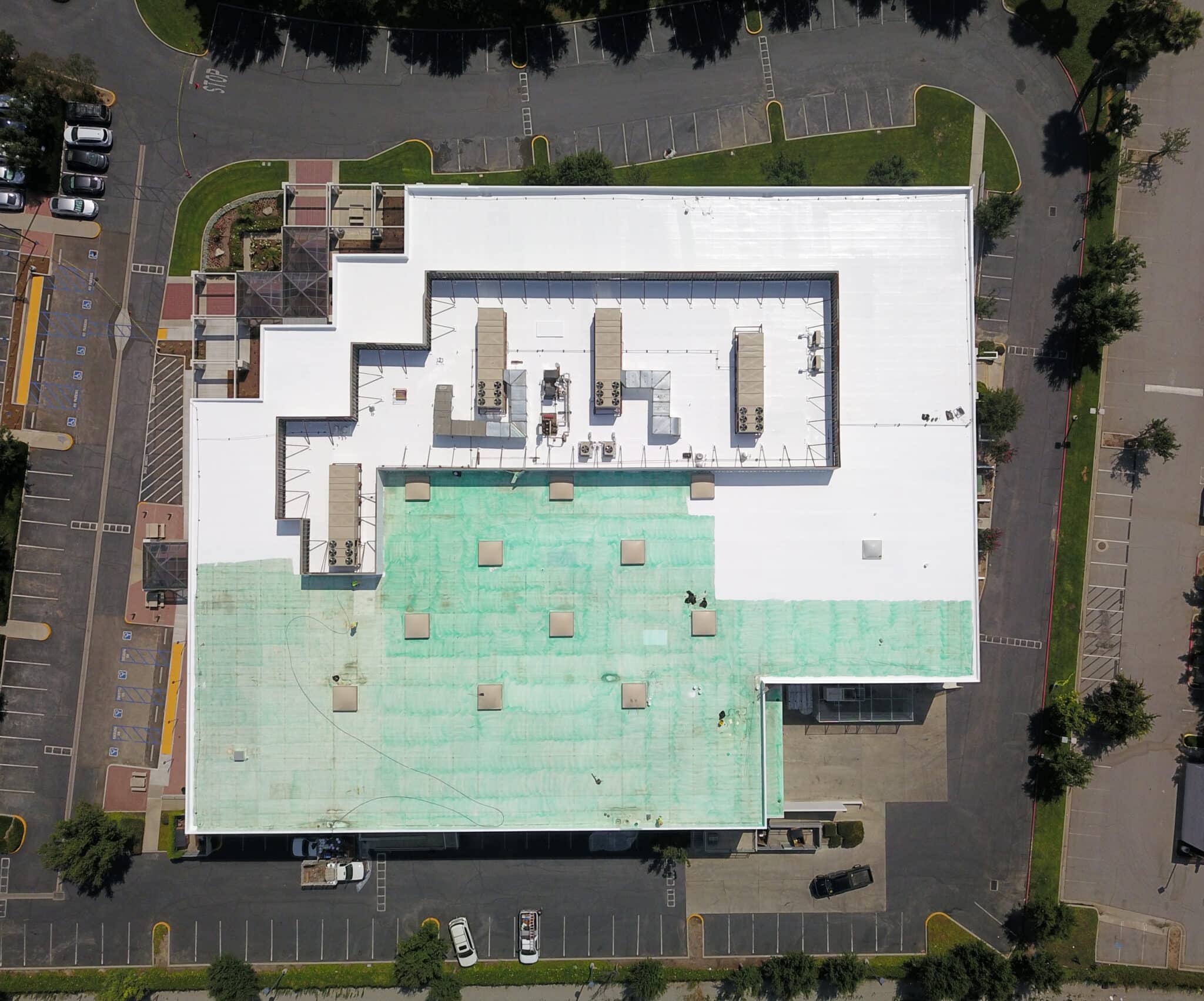

PolyBrite® 95 and PolyBrite® 98
- PolyBrite 95 is a ready-to-use, solvent-borne, moisture cure silicone roof coating available in white or as tinted, which cures to form a seamless membrane when applied over the entire roof area.
- PolyBrite 98 is a water-based, one-part primer/bleed blocker that enhances the adhesion of Polyglass silicone roof coatings to a variety of porous and non-porous substrates.
Product Application: High-Rise Apartment Complex
The PolyBrite 98 and PolyBrite 95 silicone roof coating system was used to restore 250,000 square feet of aged, modified bitumen roof for a Washington DC apartment building, providing an energy-efficient, water-resistant and long-term solution for the high-rise apartment.
PolyBrite® 780, PolyBrite® 73 and PG 700-QS
- PolyBrite 780 is a black, water-based epoxy primer/sealer designed to increase the bond of Polyglass acrylic elastomeric top coats to a wide variety of roofing substrates.
- PG 700-QS is a high-quality water-based elastomeric coating available in white or as tinted, which cures to form a seamless membrane when applied over the entire roof area.
- PolyBrite 73 is a premium-grade white elastomeric mastic that cures to form a seamless flexible, waterproof membrane that will expand and contract with the movement of the roof surface. PolyBrite 73 offers excellent adhesion, flexibility, high tensile strength, and resistance to ultraviolet degradation.
Product Application: Big Creek Hydroelectric Powerhouse
PolyBrite 780, PG 700-QS, and PolyBrite 73 were used for a roof installation project for the Big Creek Hydroelectric Powerhouse on the San Joaquin River. High temperatures and constant moisture in the air at the project site posed the biggest challenges for the project.
PolyBrite 780 was selected for better bonding of the spray polyurethane foam (SPF), with a second layer applied to add adhesion to the foam and prep the surface for the polyurea layer and waterproof roof coatings to follow. PG 700-QS helped to seal the temperature- and moisture-sensitive SPF foam against the constant moisture emitted by the powerhouse itself.
PolyBrite® 70 and PG 800
- PolyBrite 70 is a 100% acrylic, premium-grade, water-based elastomeric coating which cures to form a seamless membrane.
- PG 800 is an asphalt-based, clay emulsion product that can be used as a protective roof coating over smooth surfaced asphalt built-up and modified bitumen membranes as well as a base coat for reflective coatings.
Product Application: Mediterranean Gyros Products (MGP), Inc.
PolyBrite 70 and PG 800 were used for a 1,200-square-foot roof installation project for MGP, a leading specialty food importer in Astoria, New York. The project was completed in under two weeks without impacting daily business operations.
Polyglass Modified Cements and Adhesives
Polyglass’ modified cement and adhesives are ideal for use with SBS-modified bitumen roof membranes as a cold-applied adhesive. They are specially formulated to be compatible with Polyglass roofing membranes like Polyfresko® G SBS HP FR and Elastoflex S6 G HP.
PG 500 Modified Cement
PG 500 is a modified cement using a high-quality formulation suitable for a cold-applied bonding agent for SBS (elastomeric) roofing systems and other membrane systems. Its “trowel-grade” consistency makes it ideal for flashing details, attachment of membranes to steep slopes and parapet walls, and a variety of waterproofing repairs.
Contact Polyglass for all your questions about our liquid-applied coatings, sealants, and below-grade waterproofing products.


